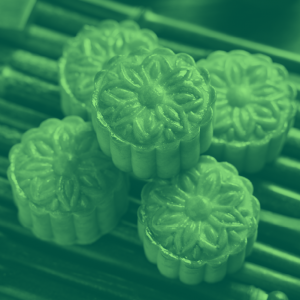Historical & Current Events dictionary
Mid-Autumn Festival
[ mid aw-tuhm fes-tuh-vuhl ]
What is the Mid-Autumn Festival?
The Mid-Autumn Festival is a harvest festival in celebration of the fall season. It originated in China and is now celebrated in many places in East Asia and in many Asian communities around the world.
The festival typically coincides with a full moon around the time of the autumnal equinox.
It is also called the Moon Festival or the Mooncake Festival. Traditional celebrations of the Mid-Autumn Festival usually involve making and eating round pastries known in English as mooncakes, which are traditionally filled with red bean and lotus seed paste (and sometimes egg yolks in the center, representing the moon).
Another tradition involves floating lanterns with wishes written to the moon goddess Chang’e (see the next section for more about her story and how it relates to the festival).
The Mid-Autumn Festival is among the most important and popular holidays in Chinese culture, along with the Chinese New Year (Lunar New Year).
Similar holidays are celebrated in other Asian countries. A related festival in Japan is called Tsukimi, and a related one in Korea is called Chuseok.
⚡When is the Mid-Autumn Festival?
Celebration of the Mid-Autumn Festival usually lasts at least a few days, but the official date is the 15th day of the eighth month of the Chinese calendar. Because the Chinese calendar is a lunar calendar, the corresponding date changes from year to year.
In 2023, the Mid-Autumn Festival will fall on September 29. In 2024, it will fall on September 17.
Where does Mid-Autumn Festival come from?

The Mid-Autumn Festival has been celebrated since at least the time of the T’ang Dynasty, which began around 618 c.e.
In Chinese culture, many traditions associated with the Mid-Autumn Festival are based on the story of the moon goddess Chang’e and her husband, the archer Hou Yi. Hou Yi was given an elixir of immortality as a reward for shooting down nine of the 10 suns that were causing droughts across the land. Chang’e discovered a plot to steal the elixir and decided to foil the plan by drinking the elixir herself. Chang’e then became immortal and floated all the way to the moon, never to be seen again. According to the legend, Hou Yi prepares a feast each year during the mid-Autumn full moon in the hopes of seeing Chang’e’s shadow.
Examples of Mid-Autumn Festival
More information and context on the Mid-Autumn Festival
Did you know … ?
- People often use the mooncake emoji 🥮 during the Mid-Autumn Festival to represent the festival or the actual mooncakes that they enjoy eating or making as part of the celebration.
What are other words used in discussion of the Mid-Autumn Festival?
Note
This is not meant to be a formal definition of Mid-Autumn Festival like most terms we define on Dictionary.com, but is rather an informal word summary that hopefully touches upon the key aspects of the meaning and usage of Mid-Autumn Festival that will help our users expand their word mastery.